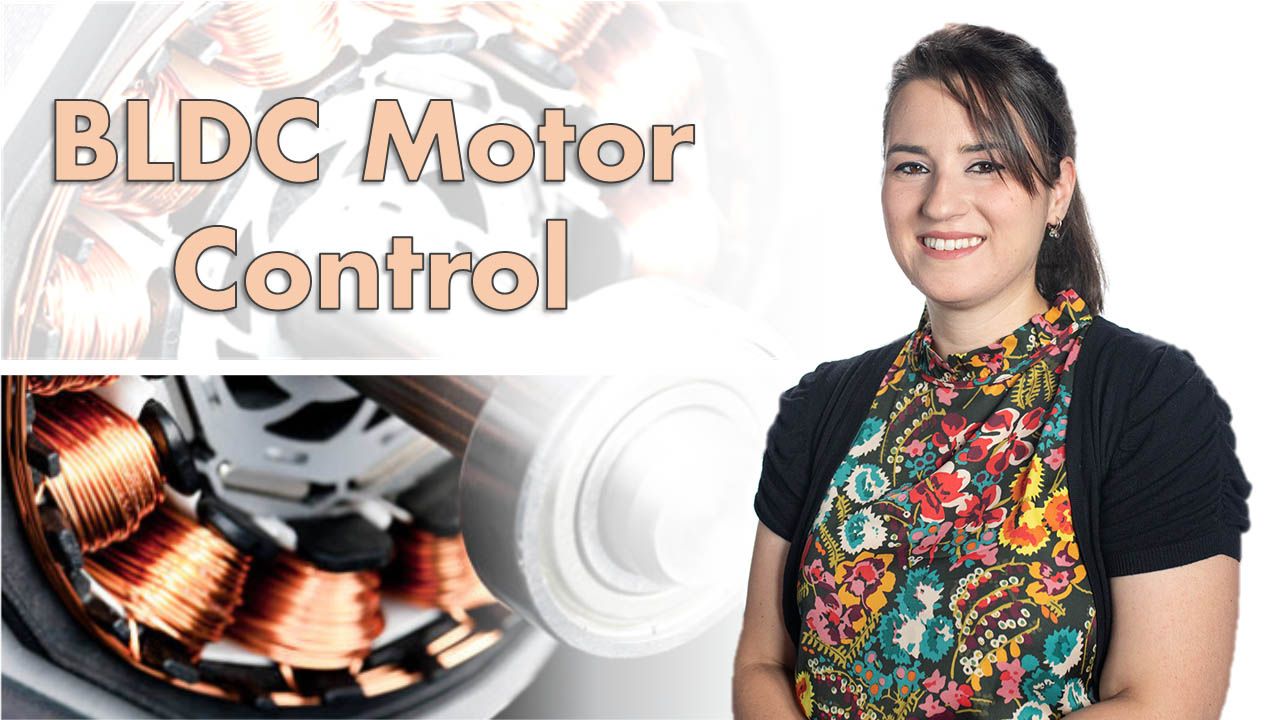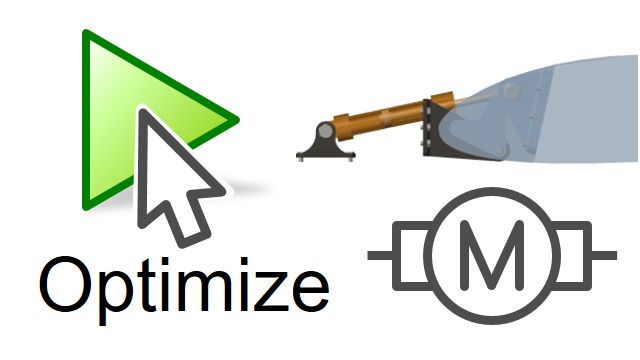【ブラシレスDCモーター(BLDC)制御入門】基本と動作の仕組み
出典シリーズ: Motor Control
Melda Ulusoy, MathWorks
*日本語字幕を表示可能です。
ブラシレスDCモーター(BLDC)の基礎を分かりやすく解説します。ブラシレスDCモーターは、ブラシ付きモーターに比べ高効率で手がかからないため、家電やロボット、自動車など様々な場所で使われています。
このビデオでは、以下の点をご紹介します。
- ブラシレスDCモーターの働き
- Simscape Electricalを使い、Simulink内でブラシレスDCモーターをシミュレーションし、逆起電力プロファイルを調査する方法
- 6段整流(台形制御)によるブラシレスDCモーターの制御方法
- 台形制御とベクトル制御によるブラシレスDCモーターと永久磁石同期機(PMSM)の制御の方法
ビデオ内で紹介したモデルのGitHubリポジトリはこちら。
公開年: 2019 年 8 月 2 日
In this series, we’re going to talk about brushless DC motors. This video will cover the basics and how these motors work and in the next ones, we’ll discuss more about motor control.
Everyday devices to more complex machines all make use of brushless dc motors that convert electrical energy into rotational motion. Brushless DC motors, also referred to as BLDCs, offer many advantages over their brushed counterparts. BLDCs provide higher efficiency and require lower maintenance and that’s why they’ve replaced brushed motors in many applications in the past few decades.
Both types of motors operate based on a similar principle, in which the rotational motion is generated through the attraction and repulsion of magnetic poles of permanent and electromagnets. However, the way these motors are controlled is very different. BLDCs require a complex controller to convert DC power to three-phase voltages, whereas a brushed motor can be easily controlled by a DC voltage.
Here, we’ll show you a simplistic animation of a brushed DC motor. By passing a DC current through the coil windings, we generate an electromagnet with these poles. These poles then interact with the poles of the permanent magnet and make the rotor spin. Note that after every half turn of the rotor, to keep the rotor spinning, we need to flip the poles of the electromagnet, which is done by switching the polarity of the current in the coil windings. This switching of phases is called commutation. In brushed motors, the commutation occurs mechanically where the brushes come in contact with the commutator of the rotor as the motor is spinning. Due to this physical contact, brushes wear out over time, affecting the motor performance.
BLDCs overcome the shortcomings of brushed motors by replacing mechanical commutation with electronically driven commutation. To better understand this, let’s look at the BLDC motor structure.
You can think of a BLDC almost as a flipped version of a brushed motor, because the permanent magnets now become the rotor, whereas the coil windings become the stator. There are motors with different magnet arrangements where the stator may have different number of windings and the rotor may have multiple pole pairs. Besides the varying configurations, you may also come across similar structured motors, the permanent magnet synchronous machines, or PMSMs.
BLDCs and PMSMs are defined as synchronous motors with permanent magnets in their rotors. Their key differentiator is the shape of their back-EMF voltages. Motors act as a generator when they are rotating. This means that a back-EMF voltage is induced in the stators, which opposes the driving voltage of the motor. Back-EMF is an important characteristic of a motor as by looking at its shape, we can tell what type of motor we have and it also dictates the type of the control algorithm we need to use to control our motor. BLDCs have a trapezoidal shape and are commonly controlled by trapezoidal control. But PMSMs are controlled by field-oriented control because they exhibit a sinusoidal back-EMF. Sometimes PMSM and BLDC motors are used interchangeably among the motor control community which may cause confusion about their back-EMF profiles. But in this video series, we will refer to motors with trapezoidal back-EMF as BLDCs and motors with sinusoidal back-EMF as PMSMs.
An easy way to observe the back-EMF shape is to use simulation. We can simulate a one pole-pair BLDC with open-circuit terminals. This means none of the coils is driven. But we can apply some torque to rotate the rotor so it acts like a generator and then measure the voltage at phase A, which will give us the phase A back-EMF. As you see on this scope, the back-EMF of the BLDC motor has a trapezoidal shape, which includes regions where the voltage remains flat. This tells us we can control this motor using DC voltage.
Next, we’ll talk about the inner workings of the motor. For that we’ll use a simple configuration where the rotor only consists of a single pole pair and the stator consists of three coils spaced at 120 degrees. Coils can be energized by passing a current through them, which we’ll refer to as phases A, B, and C. The north pole of the rotor is shown with red, whereas blue represents the south pole.
Currently, none of the coils is energized and the rotor is stationary. Applying voltage across two phases, A and C generates a combined magnetic field along the dashed line. As a result of this, the rotor now starts to rotate to align itself with the stator magnetic field as seen in this animation.
There are six possible ways of energizing coil pairs. By commutating two phases at a time, we can make the stator magnetic field rotate, which will cause the rotor to turn and end up in the positions shown in the animation. The rotor angle is measured with respect to the horizontal axis and there are six different rotor alignments, each 60 degrees apart from each other. What this means is, if we can commutate the correct phases every 60 degrees, we can make the motor spin. And this is called six-step commutation, or trapezoidal control. Note that with more pole pairs, the commutation occurs more frequently. To properly commutate the motor at the right times with the correct phases, we need to know the rotor position, which is usually measured by using hall sensors.
Let’s discuss how the poles interact with each other. Here, the arrows represent the relative magnetic forces and the arrow thickness indicates the field strength. These two poles of the same kind repel each other, making the rotor turn counterclockwise. At the same time, the opposite poles attract each other and the rotor keeps on turning in the same direction. Once it completes 60 degrees of rotation, the next commutation occurs. Let’s also show the stator magnetic field we discussed earlier on the animation. As you can see, the commutation occurs in such a way that the rotor never aligns with the stator magnetic field but is always chasing it.
Here are the two facts that can explain this behavior. First, when the rotor and stator magnetic fields align perfectly, the motor creates zero torque. So we never let them align. Second, maximum torque occurs when the fields are at 90 degrees to each other. So the goal is to bring this angle close to 90 degrees. However, in BLDC motors, we never achieve 90 degrees with six-step commutation but the angle fluctuates within some range. And this is due to the simple nature of the trapezoidal control. But more advanced techniques such as field-oriented control, commonly used to control PMSMs as we discussed before, allows to generate a larger torque by achieving 90 degrees between the stator and rotor magnetic fields.
To control the phases for the six-step commutation, a three-phase inverter is used to convert the DC power into three phase currents, which are shown on the animation with red and blue. To supply positive current to one of the phases, the switch connected to that phase at the high side needs to be turned on. And for negative current, the low side switch needs to be on. A constant voltage gets converted by the three-phase inverter to keep the motor at a constant speed. But to control the motor at varying speeds, we need to be able to adjust the applied voltage. One way of doing this is to use PWM. But we’ll talk about this in more detail in the next videos. For more information on BLDC motors, don’t forget to check out the links below this video.






